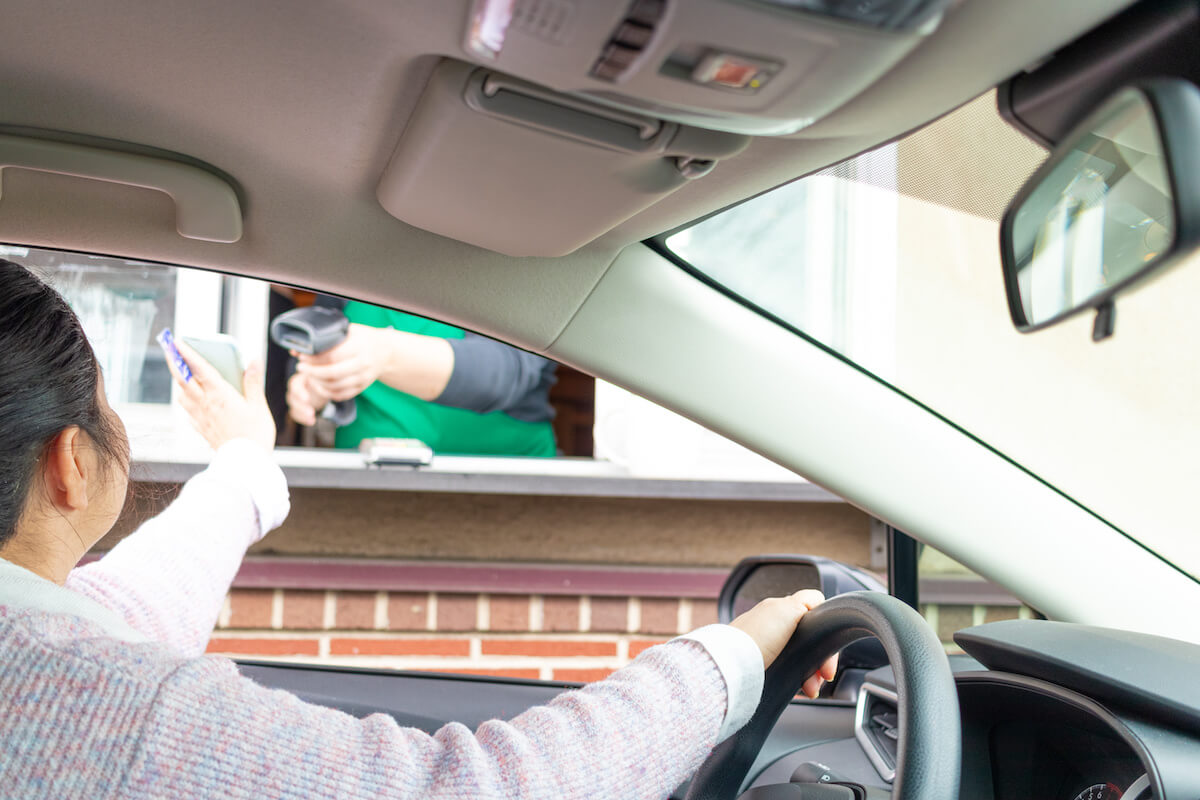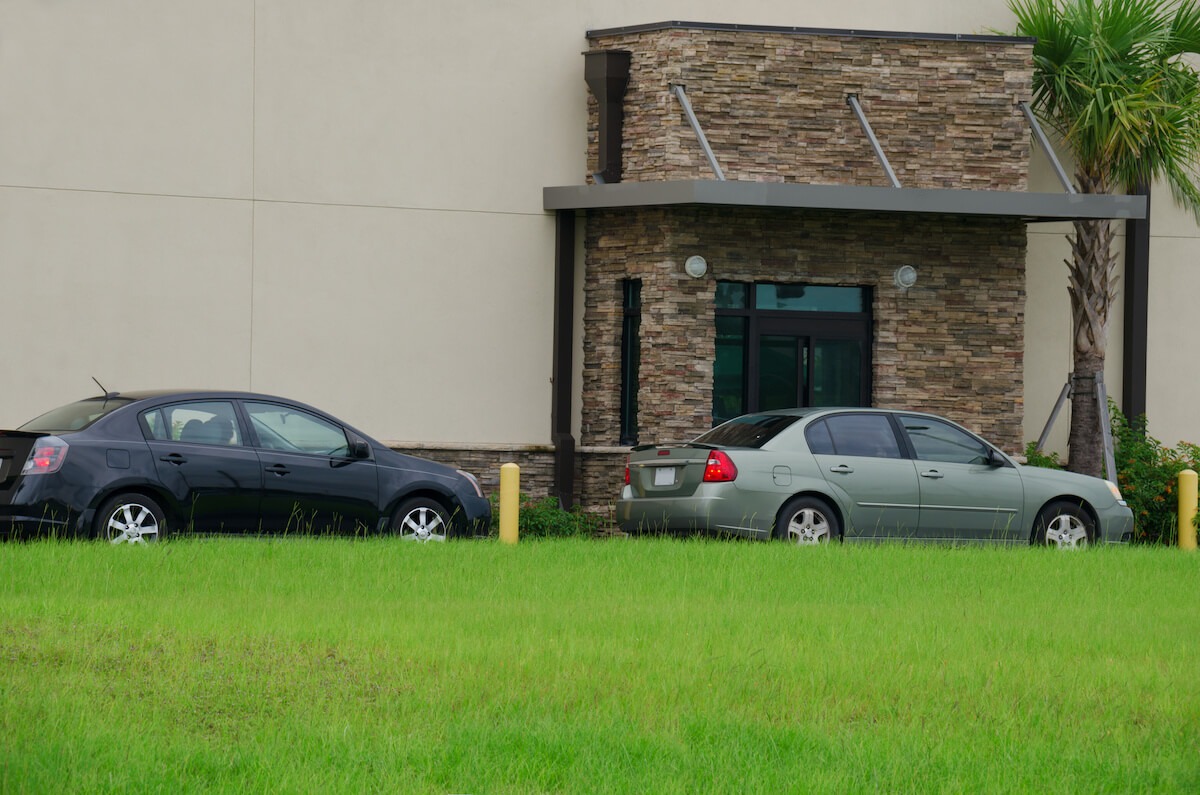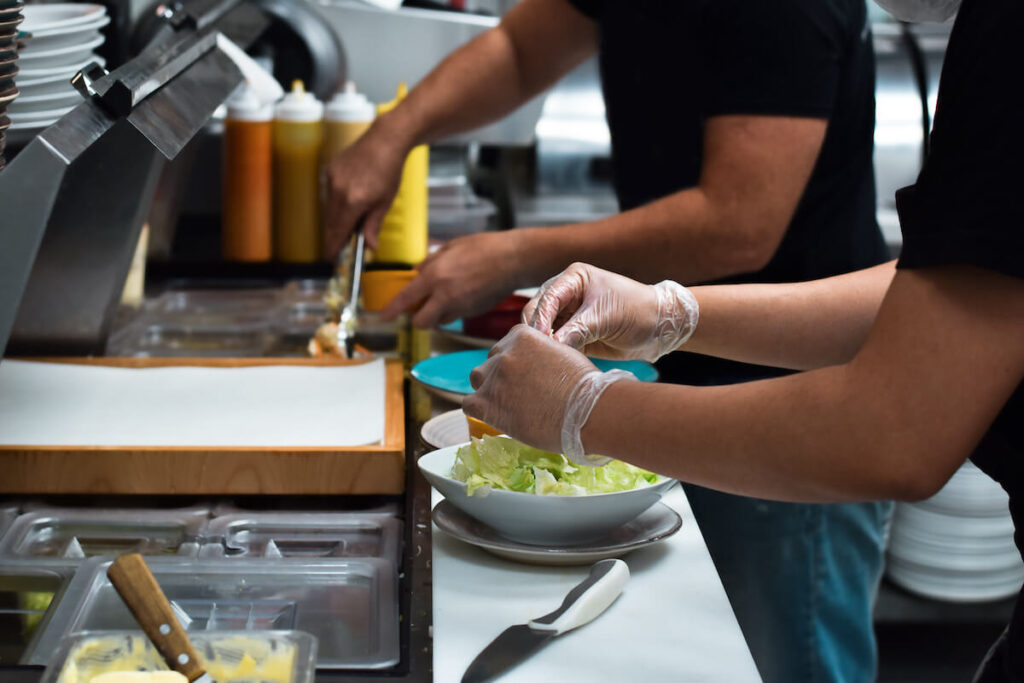Key Takeaways:
- While drive-thru is a critical sales channel for quick-service restaurants, restaurants lose a ton of business due to long drive-thru lines
- Restaurants have to be strategic in their solutions to speed up drive-thru wait times and alleviate roadblocks to ordering so guests don’t drive away and take their business elsewhere
- Voice AI is a powerful technology affording several benefits to restaurants, ranging from making drive-thru operations more efficient to reducing employee stress and boosting productivity overall
The onset of the pandemic brought contactless and mobile ordering to the forefront of our way of life. Where once we would walk into a restaurant and grab a table, we now found ourselves weighing our only two options: delivery or drive-thru? With the high fees associated with delivery apps, many people chose restaurant drive-thrus out of familiarity and ease of use.
However, this increase in guest traffic also meant more employees were needed to handle these new orders, and with the labor shortage, many quick-service restaurants (QSRs) found themselves struggling to keep up. Today, the struggle continues as QSRs deal with an unprecedented amount of unfilled positions, leading to long waits to order and receive food.
A 2021 study of drive-thru restaurants, including McDonald’s, Wendy’s, Taco Bell, KFC and Burger King, shows that the average wait time has grown more than 25 seconds per guest since the previous year, contributing to longer lines and customers not willing to deal with the increased wait. Even the CEO of Chick-fil-A said 30% of people are driving away because the lines are too long.
Fast-food guests have also had to deal with order accuracy falling 2% since last year, with inaccurate orders taking 71 seconds longer than accurate orders to even arrive. These may seem like small numbers, but they add up fast when you think about how many meals are served every day. The combination of high demand and low worker supply is resulting in many restaurants looking for better ways to serve guests while freeing up their service workers to perform their jobs quickly and accurately.
Key challenges facing restaurant drive-thrus today

While having more guests may come with higher sales potential, it also creates its own challenges when restaurants are understaffed and can’t actually serve those people, leading to frustrated guests who take their business elsewhere. With restaurant technology that allows you to automate routine tasks such as order taking, your staff is no longer tied up taking orders, and can now spend time making them and serving guests.
A challenging labor market
The global workforce has been impacted by the Great Resignation, but the restaurant industry was among the hardest hit. Last year alone, quit rates in hospitality and food service increased by more than 22%.
Owners of fast-food chains and other fast-casual establishments find themselves having to choose between allocating team members to cover orders, phones and food prep, or actually serving guests.
According to Lisa van Kesteren, SeeLevel HX CEO, “With so many obstacles, it’s easy to lose sight of the guest experience, but that comes with big risks including damage to the brand and a decrease in customer loyalty.”
Surging demand for drive-thrus
During the pandemic, many Americans who ate at fast-food restaurant chains used curbside pickup and drive-thrus. Even as dining rooms reopened, many guests continue to feel safer in their cars than spending time ordering and dining inside the actual restaurants.
In fact, one study found that more than 50% of QSR orders were placed in drive-thrus in August 2021, compared to only 42% in January 2020. With the uptick in demand, QSRs would be wise to seize the opportunity to minimize wait times and maximize profitability.
Frustration inside the restaurant
More demand in the drive-thru lane means more demand for team members to quickly keep the line moving, taking focus away from in-store guests who may seek faster methods of service—quicker service they see restaurant drive-thru guests receiving. Even as pandemic restrictions have relaxed, in 2022 many understaffed restaurants have decided to simply close the indoor dining room, but even this approach doesn’t fully alleviate the pressure on drive-thru team members.
3 solutions to speed up drive-thru wait times

For more efficient restaurant drive-thru lines, using technology such as voice AI to automate the ordering process allows employees to focus on food prep and customer service rather than order taking. A team member who once was dedicated to only one task of taking drive-thru orders can now join other staff to put together the orders, increasing productivity and helping the restaurant serve drive-thru guests more efficiently.
Make things easier for the staff
Excellent guest service starts with team members who can dedicate time and energy to taking care of each guest and provide one-on-one attention. If team members have to constantly switch focus at a high speed, they’ll eventually burn out, affecting their ability to serve guests and in turn affecting your restaurant’s reputation. A growing number of quick-service restaurants are using technology, such as voice AI, to lift the burden of tasks like order taking, so employees can focus on the all-important element of in-person guest service.
Voice AI virtual ordering assistants handle drive-thru orders and phone orders by talking with guests just as a regular team member would, including dynamic upselling. This frees up staff to focus on food prep, order fulfillment and interacting with guests. Here are some of the many benefits of using voice AI technology for your drive-thru:
- More accurate orders: Long drive-thru lines cause team members to be overwhelmed and forces them to prioritize speed above all else, affecting order accuracy. With virtual ordering assistants provided by ConverseNow, orders are taken with efficiency and remarkable accuracy.
- Dynamic upsell and higher average check: Voice AI has insights into a guest’s prior orders, so it’s able to make personalized suggestions about relevant menu items. With automated and dynamic upsell, restaurants using ConverseNow have seen average check increases in excess of 15%.
- Less time answering phones: Voice AI can handle an unlimited number of orders at once, so the phone isn’t ringing off the hook and staff aren’t bogged down at the drive-thru. Guests also aren’t hearing busy signals when the lines are jammed during peak times and they’re not being placed on long holds.
- Ease the labor shortage: Restaurants often have to deal with fluctuations in staffing, such as when team members call out sick or if open positions are unfilled. Voice AI is like a virtual team member that’s always available 24/7 and dedicated to the time-consuming task of order taking. While voice AI speaks with guests, orders flow in seamlessly into the restaurant’s POS so kitchen staff have all the information they need to fulfill the orders. Staff can focus on order fulfillment and guest service without the high pressure and stress of juggling several tasks simultaneously.
Take pressure off the drive-thru
With drive-thru being a critical sales channel for many quick-service restaurants, fast-food chain owners should find solutions that take pressure off their team members that are already spread too thin.
To relieve stress for employees working in drive-thrus, adding more support or shifting some of their duties to be handled by automation technology can make a big difference for stress levels and to keep them from being so overwhelmed they perform poorly or decide to quit their jobs. With restaurant drive-thru ordering technology, you can both add support and take away some of their duties:
- Order confirmation boards (OCB): Order confirmation boards improve the average drive-thru wait time by 34 seconds, according to SeeLevel HX, but the benefits go beyond saving time. Guests and kitchen staff both want to get every order correct. By including an order confirmation board alongside menu boards, the guest gets reassurance that their order has been properly understood and captured. With a clear view of their order, a guest may see that they forgot to include other items as well.
- Voice AI: Also known as conversational AI, voice AI has proven benefits for easing drive-thru pressure and making the drive-thru ordering experience more efficient for both team members and the guests they serve. For Fazoli’s, a ~220-unit restaurant Italian chain under FAT Brands, using voice AI-powered virtual ordering assistants in the drive-thru made a huge impact. According to Wayne Pederson, who served as Fazoli’s Senior Vice President of Information Technology, using voice AI technology in Fazoli’s drive-thrus helped the brand keep their drive-thru running at their target of two minutes per guest at a time when only three team members were running the store, which he described as “an otherwise-impossible task.”
Focus on growing the digital side of your business
Countless stories about quick-service chains such as Domino’s, Starbucks and Chipotle detail efforts to improve guest experiences by optimizing restaurants’ digital ecosystems, with everything from improved ways to order to setting up their stores with digital infrastructure like digital phone systems.
Research indicates that digital transformation leads to higher profitability for 80% of companies that pursue it, giving restaurant brands that embrace technology an enormous advantage over those who don’t. During the pandemic, digital transformation was especially crucial for restaurants, as guests sought contactless experiences and remote ordering.
Digital transformation can include artificial intelligence, such as voice AI-powered virtual ordering assistants that can transform drive-thru restaurant operations, delivering better guest experiences.
Start reducing restaurant drive-thru wait times in your stores
Voice AI is a powerful technology that provides several benefits to restaurants, ranging from making drive-thru operations more efficient to reducing employee stress and boosting productivity overall.
ConverseNow’s industry-leading voice AI virtual ordering assistants now operate in more than 1,100 stores across 40 states, including popular national and regional brands such as Domino’s, Fazoli’s and Blake’s Lotaburger.
Head to ConverseNow.ai to learn more about how voice AI can take your brand to the next level.




